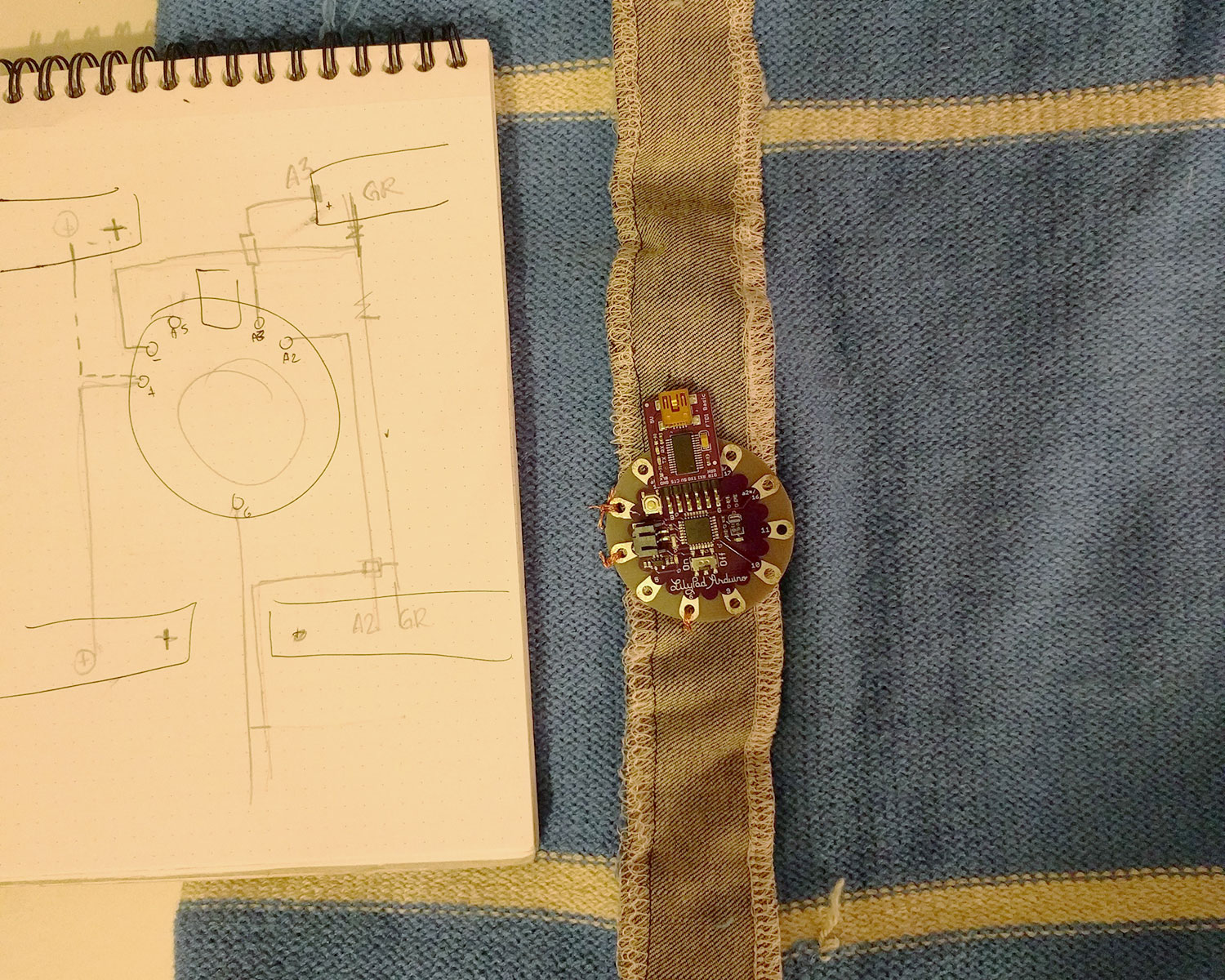Stretch Synth: A Woven Synthesizer By Heidi Biggs
The Stretch Synth is a scarf-sized fabric tube knit on a knitting machine. Stretch Synth is a synthesizer that plays music as you stretch, bend and scrunch a woven tube of fabric. Conductive yarn was used to weave banded sensors into a piece of fabric using the Softlab’s knitting machine. These woven sensors are connected to a lily pad in order to act as potentiometers to influence audio output. The ultimate goal of this project is to create a body-length tube a performer could wiggle through, creating sound based on their movement. Conceptually, this is reminiscent of a technologically infused Lamentation by Martha Graham.
Stretch Synth is both a synthesis of my newly acquired e-textile and physical computing skill sets as well as a preliminary foray into interfaces that ask what meaning can be made in the intersection of technology, form and movement.
The following is a pictorial overview of my process and progress so far.
Starting with a sketch, you can see thoughts about construction, possible metaphors, sensor placement, and yarn weight.
To prototype, I tried two different ways of knitting, a circular knitting machine and a straight knitting machine.
After deciding the straight knitting machine worked best for my project, I produced this piece of fabric (below) by alternating non-conductive yarn (blue) with conductive yarn (white) to make the sensors for my Stretch Synth.
Here’s the fabric once taken off the knitting machine.
After knitting the fabric, I started prototyping circuits and testing it’s conductivity.
This is my process for beginning to sew the lily pad onto my sensor. This photo also shows the technique to connect the two ends of the fabric by using a serger to attach a strip of denim as a neutral middle ground between the sensor ends. Then before sewing traces, I sketched a rough circuit pattern.
Below is my Stretch Synth after I had sewn the lily pad on and sewn traces with conductive thread to one of the sensors two. For prototyping, I simply used an 8 ohm speaker, however part of the plan is to create a speaker jack in the synth as well. In another iteration, I will sew traces to the second sensor and have the two sensors interact to make sound. Here’s a close up of my sewn-on lily pad and speaker. I have added a circuit overlay since the traces were hard to see.
Here’s the final product for now. I would like to play with sound quality, and the material of the tube itself and the sensors and traces in my next iterations (as mentioned above).
Finally, here is the code I used for this project so far:
int sensor = A3 ; // potentiometer connected to analog pin 2
int speaker = 6;
void setup() {
// initialize serial communication at 9600 bits per second:
Serial.begin(9600);
pinMode(speaker, OUTPUT);
}
void loop() {
// read the input on analog pin 0:
int sensorValue = analogRead(sensor);
int freq = map(sensorValue, 550, 670, 300, 1500);
int dur = map(sensorValue, 550, 670, 0, 500);
// print out the value you read:
Serial.println(sensorValue);
delay(1); // delay in between reads for stability
if (sensorValue > 550 ) {
tone(speaker, freq);
} else {
noTone(speaker);
}
}










